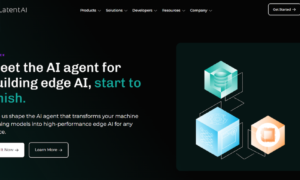Welcome to the digital revolution! The world as we know it. is being transformed by the power of IoT. From our homes to our workplaces, this ground-breaking technology is enhancing efficiency and convenience like never before. In this blog post, we will explore how businesses can tap into the potential of IoT to streamline operations, boost productivity, and ultimately drive success in a rapidly changing market. Get ready to uncover a plethora of exciting possibilities that lie ahead as we delve into the enriching world of IoT innovation.
Introduction to IoT
The Internet of Things, or IoT, is a system of interconnected devices and sensors that can communicate with each other and exchange data. By connecting devices and sensors to the internet, businesses can collect real-time data about their operations, environment, and customers.
IoT can be used to improve efficiency and convenience in a variety of ways. For example, businesses can use IoT-enabled devices to track inventory levels and automatically reorder supplies when they run low. Or, they can install sensors to monitor energy usage and identify ways to reduce consumption. Additionally, businesses can use IoT to create smarter buildings that adjust lighting and temperature based on occupancy levels.
IoT also has the potential to improve customer service by providing businesses with real-time insights into customer behavior. For example, retail stores can use IoT-connected devices to track foot traffic patterns and identify which products are being browsed but not purchased. This information can be used to make strategic decisions about product placement and pricing.
By harnessing the power of IoT, businesses can gain a competitive edge by becoming more efficient and convenient.
What is IoT and How Does it Work?
IoT, or the Internet of Things, is a term used to describe the interconnectedness of physical objects and devices that are equipped with sensors and software. These devices are able to collect and share data about their surroundings, which can then be used to enhance efficiency and convenience in a variety of ways.
For businesses, IoT can be used to streamline operations and create new opportunities for customer engagement. For example, retail stores can use IoT-enabled beacons to send personalized offers to shoppers as they walk by, or factories can use sensor-equipped machinery to automatically adjust production levels based on demand.
The sky is the limit when it comes to harnessing the power of IoT, and businesses that are able to effectively utilize this technology will have a significant competitive advantage in the years to come.
For consumers, IoT devices can be used to make everyday tasks easier and more efficient. For example, many modern homes are equipped with smart light bulbs or appliances that can be controlled remotely via a smartphone app. This means homeowners no longer have to get up from the couch to switch off the lights when they leave the house—they can do so from their phone.
Benefits of Leveraging the Power of IoT within Business Environments
IoT is an emerging technology that enables businesses to connect and manage devices and systems remotely. This type of technology can help businesses increase operational efficiency and convenience while reducing overall costs. Here are some ways that businesses can leverage the power of IoT within their environments:
1. Automate manual tasks: IoT can automate tasks that are currently performed manually, such as data collection and monitoring. This can free up employees’ time to focus on other tasks, improving overall productivity.
2. Improve asset management: With IoT, businesses can track and manage assets in real-time. This helps to improve utilization rates and prevent costly downtime due to lost or damaged assets.
3. Increase customer engagement: By collecting data from connected devices, businesses can gain insights into customer behavior and preferences. This allows for more personalized and relevant engagement with customers, leading to improved customer satisfaction levels.
4. Enhance security: IoT can help businesses improve security by providing visibility into activity across all connected devices and systems. This data can be used to identify potential security threats and take proactive measures to mitigate them.
Security Concerns When Implementing an IoT System
The Internet of Things has been a game-changer for businesses, enhancing efficiency and convenience in a number of ways. However, as with any new technology, there are security concerns that must be considered when implementing an IoT system.
One of the biggest security risks with IoT is the potential for data breaches. Because IoT devices collect and transmit large amounts of data, they are prime targets for hackers looking to steal sensitive information. To protect against data breaches, businesses should implement strong security measures such as encryption and authentication.
Another concern is the possibility of device tampering. Because IoT devices are often connected to critical infrastructure, such as power plants or transportation systems, tampering with these devices could have serious consequences. To prevent device tampering, businesses should use tamper-resistant hardware and software.
Businesses must also consider the risk of Denial of Service (DoS) attacks. Due to their increased connectivity, IoT devices are more susceptible to DoS attacks than traditional devices. To protect against DoS attacks, businesses should implement security protocols such as rate limiting and firewalls.
Examples of Businesses That Have Benefited from Utilizing IoT Solutions
Technology has always been a huge part of business efficiency and convenience, but the internet of things has taken it to a whole new level. By definition, the internet of things is “the network of physical devices, vehicles, home appliances, and other items embedded with electronics, software, sensors, and connectivity which enables these objects to connect and exchange data.” In other words, IoT is connecting everyday devices to the internet so they can communicate with each other and share data.
The benefits of harnessing the power of IoT are vast and varied, but some examples include:
– Increased productivity: Imagine being able to track inventory in real-time without having to manually count everything. Or being able to automatically restock shelves as soon as items are running low. These are just a couple examples of how IoT can make your business run more smoothly and efficiently.
– Improved customer service: With IoT devices collecting data about customer preferences and behavior, you can provide a more personalized experience that leads to happier customers. For example, you could use this data to send custom coupons or recommendations for products they might like.
– Cost savings: Automating tasks with IoT can help you save on labor costs while also reducing errors and increasing accuracy. For instance, if you install sensor-based lighting systems linked to an occupancy detector, you’ll only use energy when someone is actually in the room – leading to big savings on your electric bills.
These are just a few examples of businesses that have already seen great success with IoT solutions. By connecting physical devices to the internet, companies can save money, improve customer service, and make their operations run more smoothly.
Tips for Implementing an Efficient IoT System
Utilizing the Internet of Things (IoT) in business can result in greater operational efficiency and convenience for customers. However, before these benefits can be reaped, businesses need to ensure that their IoT system is designed and implemented efficiently. The following tips can help with this:
1. Define the goals and objectives of the IoT system. What exactly do you want it to achieve?
2. Identify which devices and sensors will be used as part of the system. Make sure they are compatible with each other and with your existing IT infrastructure.
3.Develop a data strategy. How will data be collected, processed, and stored? Who will have access to it?
4.Create a security plan. How will you protect the system from cyber attacks?
5 . Test the system thoroughly before rolling it out to avoid any disruptions or issues once it’s live .
6. Establish scalability and maintenance processes. As the system grows, how will it grow? What steps are needed to keep it running smoothly?
By taking the time upfront to answer these questions and ensure that your IoT system is designed and implemented correctly, businesses can take full advantage of its benefits.
Conclusion
The Internet of Things is rapidly making the world increasingly automated and efficient. With its many advantages, businesses can save time and money by utilizing this powerful technology while reducing operational costs and improving customer service. By harnessing the power of IoT, businesses have an invaluable tool to enhance efficiency while providing a more convenient experience for employees and customers alike. Whether you are looking to update your operational process or increase customer satisfaction, embracing IoT offers significant potential for any business’s bottom line.



































